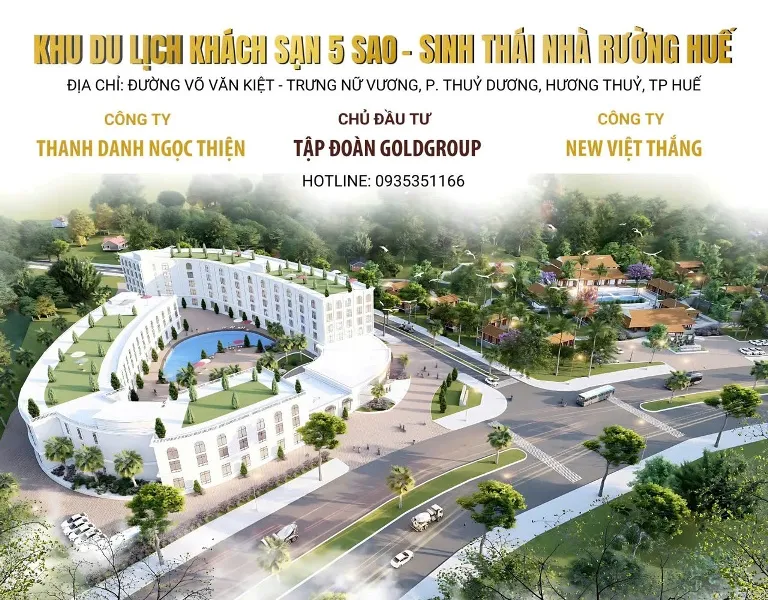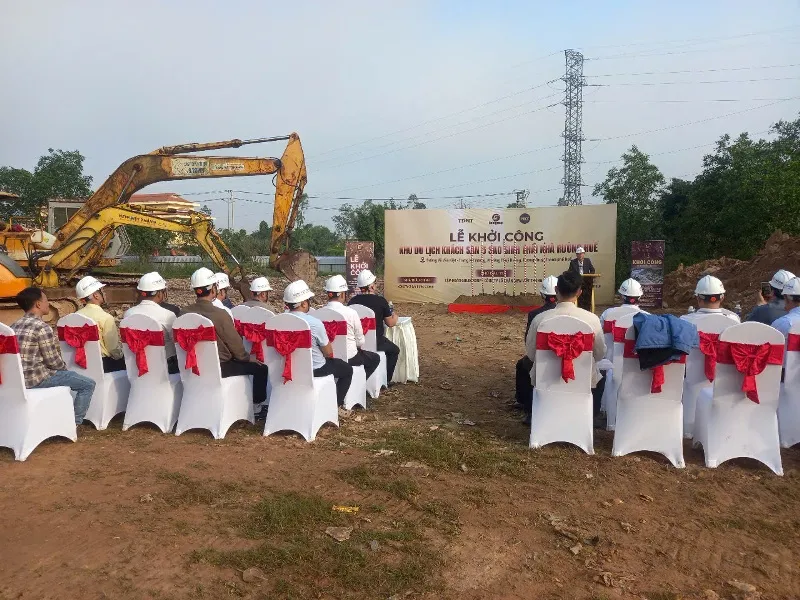Hue, the dreamy ancient capital of Vietnam, has long been renowned for its magnificent imperial architecture, solemn mausoleums, and poetic natural beauty. Beyond these, a unique cultural aspect, deeply rooted in Hue, that visitors shouldn’t miss is the traditional house architecture known as “nhà rường”. Hue’s traditional house tourism is now asserting its position, offering new and profound experiences for visitors to the ancient capital. The emergence of the Hue Traditional House Eco-Tourism Area promises to be a new highlight, enriching the cultural tourism tapestry of the city.
Hue Traditional House Architecture – The Quintessence of Ancient Capital Culture
Hue traditional houses, a distinctive type of traditional residential architecture in the ancient capital, are not merely shelters but also cultural symbols, reflecting the lifestyle, customs, and aesthetic sensibilities of the local people. Originating in the 17th century, Hue traditional houses were associated with the nobility, mandarins of the Nguyen Dynasty, and affluent families. Through historical ups and downs, the architecture of these houses has preserved its unique values, becoming a priceless cultural heritage of Hue.
The unique feature of Hue traditional houses lies in their wooden frame, constructed entirely from precious woods such as ironwood, ebony, and rosewood. The wooden components are connected using mortise and tenon joints and pegs, without nails or screws, showcasing the skillful craftsmanship and sophistication of ancient artisans. A typical house often has three compartments and two lean-tos, or five compartments and two lean-tos, with a system of columns, beams, and purlins meticulously and exquisitely carved with patterns, imbued with the artistic imprint of the royal court. The roof is covered with “liệt” tiles or tubular tiles, creating a classic, mossy beauty.
Beyond the emphasis on wooden architecture, Hue traditional houses harmonize with the surrounding nature. Houses are typically built within spacious gardens, with greenery and fish ponds, creating airy, nature-connected living spaces. Feng shui principles are also particularly important in the architecture, from the house’s orientation and the arrangement of rooms to the selection of building materials, all aimed at balance, harmony, and bringing luck and prosperity to the homeowner.
Hue traditional houses are not just architectural works but also works of art, living museums of Hue culture. Each traditional house carries historical narratives, traditional cultural values, and is a repository of memories for generations of families.
Hue Traditional House Eco-Tourism Area – A New Destination with Great Potential
Recognizing the cultural value and immense tourism potential of Hue traditional house architecture, New Viet Thang Investment – Trade – Tourism Joint Stock Company boldly invested in building the Hue Traditional House Eco-Tourism Area. The project is located in Thuy Duong ward, Huong Thuy town, a convenient location near the city center of Hue and easily connected to other famous tourist attractions.
With phase 1 scaled at 24 traditional houses, the eco-tourism area is designed in the traditional Hue garden house architectural style, harmoniously combined with the ecological natural landscape. Visitors here can admire the ancient and unique beauty of traditional houses, experience a peaceful and tranquil living space, and immerse themselves in Hue culture.
The eco-tourism area includes a variety of facilities, catering to tourists’ needs for relaxation, sightseeing, and cultural experiences:
- Central Traditional House: Nearly 500m2 in area, serving as a common living space, hosting cultural and artistic events, and displaying traditional handicrafts of Hue.
- Traditional House Bungalows: 9 bungalows designed in the traditional house style, offering private, cozy, and Hue-characteristic accommodation.
- Traditional House Exhibition: 3 traditional houses dedicated to exhibiting and introducing Hue traditional house architecture, related cultural and historical values, and local specialties.
- Traditional House Recreation: 5 traditional houses arranged with recreational, entertainment, and relaxation spaces for visitors.
- Guesthouses: 5 modern and comfortable guesthouses, meeting the diverse needs of visitors.
In addition, the eco-tourism area is also invested in a system of green trees, flower gardens, bonsai, especially nearly 100 ancient apricot blossom trees (“hoàng mai”) aged from tens to hundreds of years, creating a green, poetic, and Hue-characteristic space.
According to the investor representative, the Hue Traditional House Eco-Tourism Area is not only a tourism business project but also the dedication of Hue natives who want to preserve and promote the traditional cultural values of their homeland. The project is expected to become an attractive and unique destination on the Hue tourism map, contributing to promoting Hue traditional house architecture to domestic and international tourists.

Experiencing Hue Traditional House Tourism – Immerse Yourself in Ancient Space
Coming to the Hue Traditional House Eco-Tourism Area, visitors not only admire the unique architecture but also have the opportunity to experience many interesting cultural and tourist activities:
- Relaxing in a traditional house space: Enjoy the peace, tranquility, and feel the ancient, cozy atmosphere of a Hue traditional house. Each bungalow is equipped with modern amenities, harmoniously combined with traditional architecture, offering a unique resort experience.
- Learning about traditional house architecture: Visit the traditional house exhibition area, explore the history of formation, architectural features, cultural and artistic values of Hue traditional houses.
- Participating in traditional cultural activities: The eco-tourism area plans to organize unique cultural and artistic activities such as Hue folk singing performances, royal court music (“nhã nhạc”), traditional handicraft demonstrations, Hue cuisine cooking classes, etc.
- Enjoying Hue cuisine: The restaurant in the eco-tourism area will serve Hue specialty dishes, prepared in a traditional style, bringing a culinary experience rich in the flavors of the ancient capital.
- Relaxing in an ecological space: Stroll in the green garden grounds, admire flowers, enjoy tea, and indulge in the fresh and relaxing atmosphere.
Hue traditional house tourism promises to bring different, unique, and profound experiences to visitors. Not just a relaxing trip, this is also a journey to explore Hue culture, history, and people, helping visitors better understand the ancient capital and its precious traditional values.

Challenges and Prospects for Developing Hue Traditional House Tourism
Despite its great development potential, Hue traditional house tourism is also facing some challenges. According to information from the groundbreaking ceremony of the Hue Traditional House Eco-Tourism Area project, the project has encountered some difficulties related to land, planning, and legal procedures. These issues need to be addressed and supported by local authorities and relevant departments to ensure the project can be implemented smoothly and on schedule.
However, with the attention of local authorities, the efforts of investors, and the immense cultural tourism potential of Hue, Hue traditional house tourism is expected to have strong development steps in the future. The Hue Traditional House Eco-Tourism Area is a testament to serious and well-organized investment in this unique type of tourism.
In the context of increasingly popular cultural tourism, Hue traditional house tourism has many opportunities to attract tourists, especially those who love culture, history, and traditional architecture. The development of traditional house tourism not only contributes to diversifying Hue’s tourism products but also creates jobs for local people, preserving and promoting the cultural values of Hue traditional houses.
Conclusion
Hue traditional house tourism is opening up a new and promising direction for cultural tourism in the ancient capital. The Hue Traditional House Eco-Tourism Area, with its unique architecture, ecological space, and distinctive cultural experiences, promises to be an attractive destination for tourists. Come to Hue and explore, experience traditional house tourism to deeply feel the cultural and historical beauty of the ancient capital, and contribute to the sustainable development of Hue tourism.